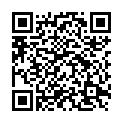|
|
|
| Module code: MTM.RY2 |
|
|
2V+2U (4 hours per week) |
|
5 |
| Semester: according to optional course list |
| Mandatory course: no |
Language of instruction:
German |
Assessment:
Written exam and presentation
[updated 01.10.2020]
|
MTM.RY2 (P231-0112) Mechatronics, Master, ASPO 01.04.2020
, optional course, technical
MST.RY2 (P231-0112) Mechatronics and Sensor Technology, Master, ASPO 01.04.2016
, optional course, technical
|
60 class hours (= 45 clock hours) over a 15-week period.
The total student study time is 150 hours (equivalent to 5 ECTS credits).
There are therefore 105 hours available for class preparation and follow-up work and exam preparation.
|
Recommended prerequisites (modules):
None.
|
Recommended as prerequisite for:
|
Module coordinator:
Prof. Dr.-Ing. Barbara Hippauf |
Lecturer: Prof. Dr.-Ing. Barbara Hippauf
[updated 30.01.2019]
|
Learning outcomes:
Introduction to the development of lens systems,
beam path calculation using the matrix method,
Using the matrix method by calculating the beam path of complex lens systems.
Monte Carlo Simulation method,
Light scattering models for the description of optical surfaces: BSDF distribution function,
Lambert, Mie, Harvey - Scattering models.
[updated 01.10.2020]
|
Module content:
1. Development of an illumination system using the simulation methods discussed and scattering models to optimize the optical surfaces
2. Definition of light sources, determination of the number of source beams and optimization of simulation parameters
3. Evaluation of the simulation results based on photometric parameters (optical flux density, radiant power, solid angle, etc.)
4. Optimization of the simulated model based on the evaluation and analysis of detected and lost rays.
5. Practical tips for simplifying complex optical models.
6. Practical tips regarding feasibility, space management, time optimization and development budget.
[updated 01.10.2020]
|
Teaching methods/Media:
Lecture in PC room, simulation applications on the PC.
[updated 01.10.2020]
|
Recommended or required reading:
Lecture notes
Eugen Hecht: Optik; sechste Auflage, Oldenbourg Verlag, 2014.
Wolfgang Demtröder: Experimentalphysik 2, Elektrizität und Optik; sechste Auflage, Springer Verlag, 2013.
[updated 01.10.2020]
|

